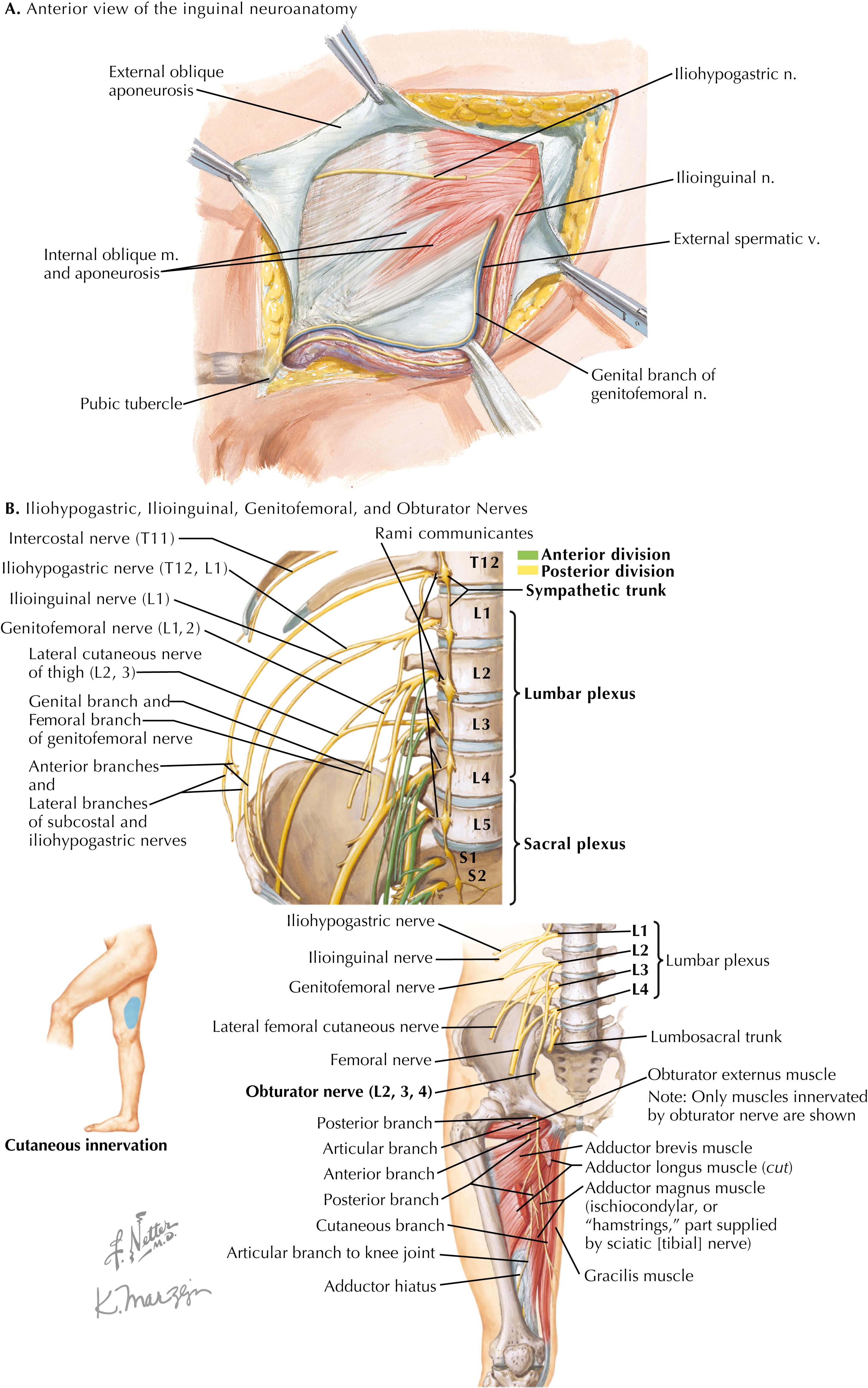Physical Address
304 North Cardinal St.
Dorchester Center, MA 02124
Chronic postoperative inguinal pain (CPIP) has become an increasingly appreciated complication of one of the most common operations performed in surgery, the inguinal hernia repair. The rate of CPIP after inguinal hernia repair is greater than the risk of developing an inguinal hernia recurrence. Chronic groin pain is defined as having pain that persists for more than 3 months after an inguinal hernia repair; 15% of patients undergoing an inguinal hernia repair have pain that affects their ability to concentrate on a daily basis 1 year after surgery; 1% to 3% have severe pain that requires medical or surgical intervention.
There are multiple risk factors for developing CPIP after an inguinal hernia repair, including a younger age, preoperative pain, prior groin surgery within the past 3 years, severe postoperative pain, postoperative complications, and female gender. To reduce the incidence and treat chronic groin pain, surgeons must have a thorough understanding of the inguinal neuroanatomy, as surgical technique also plays a role in CPIP.
All approaches to inguinal hernia repair have the potential for development of CPIP. This includes anterior approaches with mesh, primary tissue repairs, and minimally invasive totally extraperitoneal and transabdominal preperitoneal repairs. An anterior approach, or open inguinal hernia repair, is typically considered a greater risk of developing chronic groin pain because of the potential direct contact to the inguinal nerves. The three most important nerves are the iliohypogastric, ilioinguinal, and genitofemoral nerves ( Fig. 38.1A ). These nerves originate from the lumbar plexus with the iliohypogastric nerve from T12-L1, ilioinguinal nerve from L1, and the genitofemoral nerve from L2 ( Fig. 38.1B ).

Importantly for anterior repairs, the iliohypogastric and ilioinguinal nerves pierce through the transversus abdominis muscle in the lateral abdominal wall and run between the transversus abdominis muscle and internal oblique, eventually piercing through the internal oblique muscle. The iliohypogastric can most commonly be found 2 to 3 cm above the level of the internal ring, whereas the ilioinguinal will run more inferiorly and travel along the anterior portion of the spermatic cord in the inguinal canal for males and the round ligament for females. The genital branch of the genitofemoral nerve also has the potential for direct injury or contact during an anterior inguinal hernia repair. The genital branch of the genitofemoral nerves runs along the anterior surface of the psoas muscle and through the internal ring along the inferior portion of the spermatic cord adjacent to the spermatic vein in males.
Become a Clinical Tree membership for Full access and enjoy Unlimited articles
If you are a member. Log in here